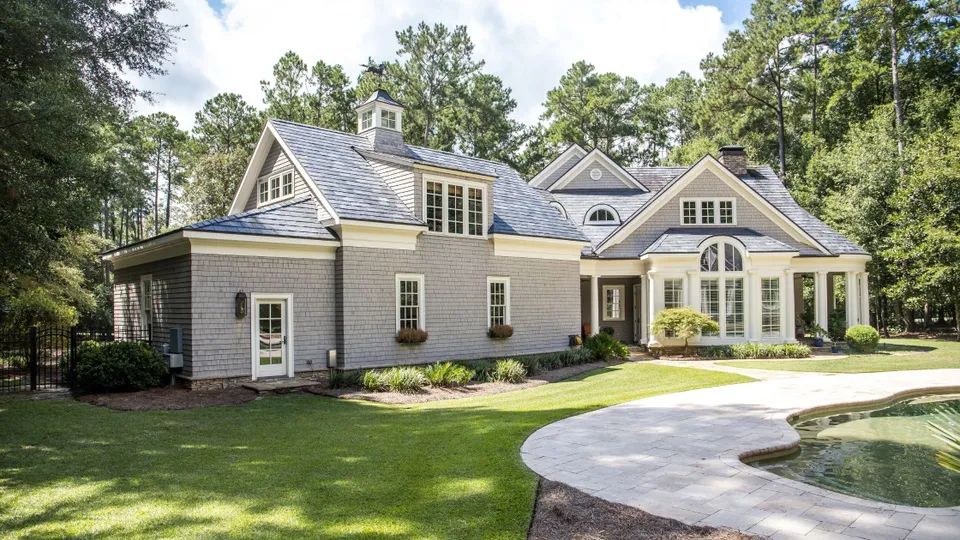

Your roof is one of the most critical elements of your home. It goes beyond just being a cover over your head; it’s a complex roofing system, with interconnected roof components that protect against rain, snow, wind, and temperature fluctuations. Understanding the parts of a roof equips homeowners in the Fox Valley area to make informed decisions about maintenance, roof replacement, or upgrading to modern roofing materials.
Whether you’re replacing asphalt shingles, fixing roof leaks, or learning about different roof styles, this guide breaks down the key parts of a roof you should know about, and why they matter.
Whether you’re replacing asphalt shingles, fixing roof leaks, or learning about different roof styles, this guide breaks down the key parts of a roof you should know about, and why they matter.
Understanding the Parts of a Roof and Roof Structure
Knowing the parts of a roof helps maximize its lifespan while preventing costly repairs. Spotting early signs of wear or damage in areas like the roof ridge, roof valley, or roof decking can save thousands of dollars. Additionally, understanding your roof's edge, the purpose of roof truss, and the role of collar beams enables you to communicate effectively with a roofing contractor for smooth repairs or upgrades.
Below, we’ll explore all the key roof components of your residential roofing system, like roof coverings, roof structures, and roofing materials.
Below, we’ll explore all the key roof components of your residential roofing system, like roof coverings, roof structures, and roofing materials.
When and How to Replace Roof Shingles
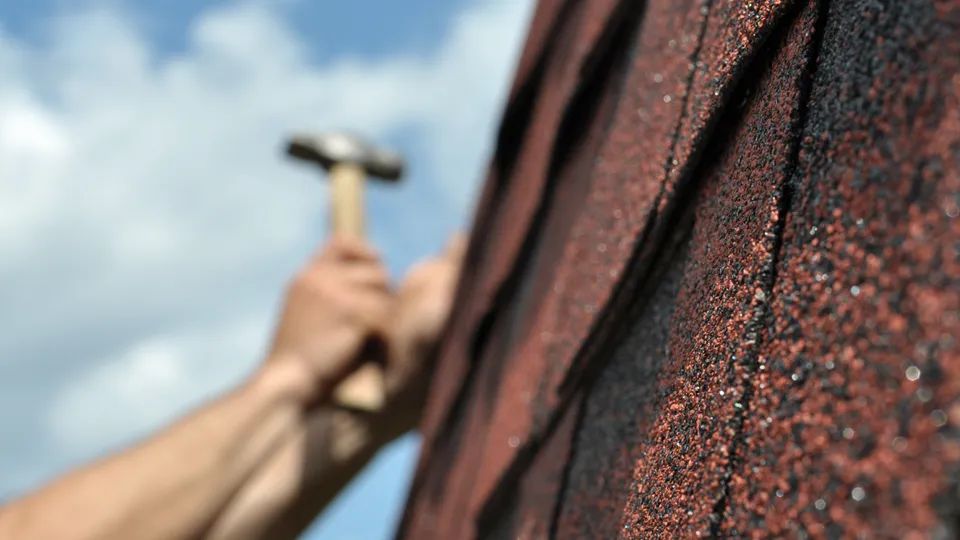
Replacing roof shingles at the right time can protect your home from serious rain and snow damage. Ignoring the signs of wear and tear can lead to costly repairs and damage to your home’s structure. Here's how to identify when it’s time for a roof replacement and what the process involves.
Look for common warning signs that your shingles are deteriorating. Shingles that are curling, cracking, buckling, or missing entirely are clear indicators that your roof may need attention. Other signs include granules collecting in your gutters, bald spots on shingles, or leaks inside your home. If these issues are left unaddressed, water can seep into your roof, causing further problems such as mold, rot, and insulation damage.
Replacing shingles involves several key steps to ensure your roof is properly protected:
Once your new shingles are installed, regular maintenance is key to extending the life of your roof. This includes cleaning your gutters, inspecting your roof after storms, and addressing minor repairs promptly to prevent larger issues.
Taking the time to replace and maintain your roof shingles ensures your home stays safe and dry, no matter the weather.
Quick tip: Always check for signs of wear near where roof planes meet, such as the roof ridge or roof valley, as these areas are prone to leaks.
Learn more about replacing roof shingles
Signs You Need to Replace Roof Shingles
Look for common warning signs that your shingles are deteriorating. Shingles that are curling, cracking, buckling, or missing entirely are clear indicators that your roof may need attention. Other signs include granules collecting in your gutters, bald spots on shingles, or leaks inside your home. If these issues are left unaddressed, water can seep into your roof, causing further problems such as mold, rot, and insulation damage.
The Roof Replacement Process
Replacing shingles involves several key steps to ensure your roof is properly protected: - Removing old shingles: The first step is tearing away the existing asphalt shingles, which allows for a full inspection of the roof deck.
- Inspecting the roof sheathing: The roof sheathing, or decking, is checked for any signs of damage, rot, or instability. If any areas are compromised, they’ll need to be repaired or replaced.
- Installing roof underlayment: A fresh layer of underlayment is laid down to provide an additional barrier against moisture.
- Applying new shingles: Finally, new shingles are installed in overlapping rows to create a durable, weather-resistant surface.
Maintaining Your Roof After Replacement
Once your new shingles are installed, regular maintenance is key to extending the life of your roof. This includes cleaning your gutters, inspecting your roof after storms, and addressing minor repairs promptly to prevent larger issues.Taking the time to replace and maintain your roof shingles ensures your home stays safe and dry, no matter the weather.
Quick tip: Always check for signs of wear near where roof planes meet, such as the roof ridge or roof valley, as these areas are prone to leaks.
Learn more about replacing roof shingles
Exploring the Different Types of Shingles for Your Home
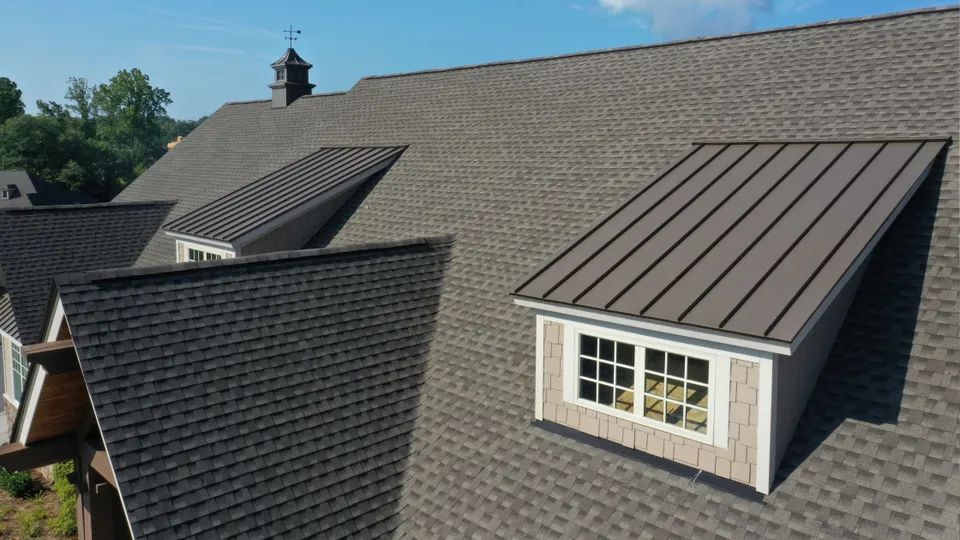
When it comes to choosing shingles, there are numerous options available, each offering unique advantages, costs, and styles. From traditional asphalt shingles to innovative synthetic materials and long-lasting metal, understanding the differences is key to making the right choice for your home.
Asphalt shingles are a popular choice for many homeowners due to their affordability and wide variety of colors and styles. They are easy to install and provide reliable protection against the elements, making them a practical option for most residential properties. However, they may have a shorter lifespan compared to other materials, typically lasting 20-30 years.
Metal shingles, such as galvanized steel or aluminum, are known for their durability and ability to withstand harsh weather conditions like heavy rain, snow, and wind. They often come with a lifespan of 40-70 years, making them a long-term investment. Metal is also energy-efficient, reflecting solar heat and potentially reducing cooling costs.
Synthetic shingles are designed to mimic the appearance of natural materials like slate, cedar, or clay, but at a more affordable price. Made from materials like rubber or polymer, these shingles are lightweight, durable, and low-maintenance. They are an excellent choice for homeowners looking for a high-end look without the high cost.
Composite shingles are another versatile option, crafted to replicate the texture and appearance of materials like wood or stone. They are resistant to fading, cracking, and warping, and they often come with extended warranties, making them a cost-effective and visually appealing choice.
Explore shingle types and their benefits here
Asphalt: Affordable and Versatile
Asphalt shingles are a popular choice for many homeowners due to their affordability and wide variety of colors and styles. They are easy to install and provide reliable protection against the elements, making them a practical option for most residential properties. However, they may have a shorter lifespan compared to other materials, typically lasting 20-30 years.
Metal: Durable and Weather-Resistant
Metal shingles, such as galvanized steel or aluminum, are known for their durability and ability to withstand harsh weather conditions like heavy rain, snow, and wind. They often come with a lifespan of 40-70 years, making them a long-term investment. Metal is also energy-efficient, reflecting solar heat and potentially reducing cooling costs.
Synthetic: Style Meets Functionality
Synthetic shingles are designed to mimic the appearance of natural materials like slate, cedar, or clay, but at a more affordable price. Made from materials like rubber or polymer, these shingles are lightweight, durable, and low-maintenance. They are an excellent choice for homeowners looking for a high-end look without the high cost.
Composite: Aesthetic and Cost-Effective
Composite shingles are another versatile option, crafted to replicate the texture and appearance of materials like wood or stone. They are resistant to fading, cracking, and warping, and they often come with extended warranties, making them a cost-effective and visually appealing choice.Explore shingle types and their benefits here
Protecting Your Roof from Wind Damage
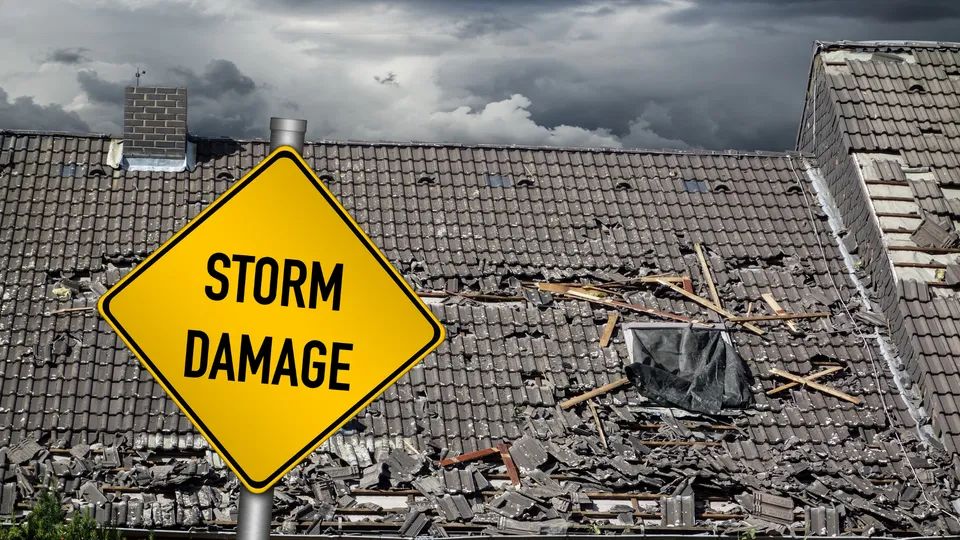
High winds can cause significant damage to the parts of a roof, including roof decking, shingles, roof vents, and metal flashing. This type of damage not only compromises the structural integrity of your roof but also leaves your home vulnerable to leaks and further weather-related issues.
To protect your roof from wind damage, it’s essential to invest in secure features. Installing a sturdy drip edge helps prevent water infiltration and keeps shingles in place during strong gusts.
Reinforced valley flashing is another key component, as it strengthens some of the most vulnerable areas of your roof where two slopes meet.
Additionally, consider using durable roofing materials, secure fasteners, and routine roof inspections to identify and address potential weak points before a storm hits.
With the right precautions, you can ensure your roof is ready to withstand even the harshest weather conditions.
Did you know? Proper ventilation, such as attic vents, reduces the risk of wind damage by maintaining balanced airflow and minimizing uplift during storms.
Get tips to protect against wind damage
Install a Sturdy Drip Edge
To protect your roof from wind damage, it’s essential to invest in secure features. Installing a sturdy drip edge helps prevent water infiltration and keeps shingles in place during strong gusts.
Reinforce Valley Flashing
Reinforced valley flashing is another key component, as it strengthens some of the most vulnerable areas of your roof where two slopes meet.
Use Durable Materials and Secure Fasteners
Additionally, consider using durable roofing materials, secure fasteners, and routine roof inspections to identify and address potential weak points before a storm hits.
Prepare Your Roof for Harsh Weather
With the right precautions, you can ensure your roof is ready to withstand even the harshest weather conditions.Did you know? Proper ventilation, such as attic vents, reduces the risk of wind damage by maintaining balanced airflow and minimizing uplift during storms.
Get tips to protect against wind damage
Identifying and Fixing Roof Leaks
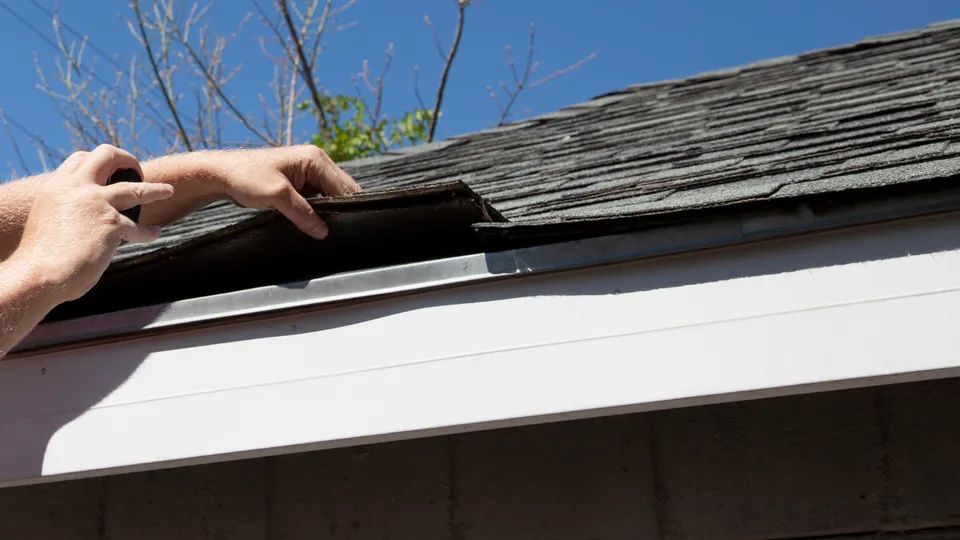
A sagging roof, water stains in the attic space, peeling paint on an exterior wall, or damp spots on your ceiling could all indicate a potential roof issue. Other signs include mold growth, missing shingles, or dripping water during heavy rain. These issues often develop slowly, so it’s essential to catch them early to avoid costly repairs.
Addressing roof leaks begins by identifying the source of the problem. Inspect the parts of a roof like chimney flashing, roof valleys, skylights, and where the roof meets walls or dormers. Gutters and downspouts clogged with debris can also contribute to leaks, as can damage to shingles, underlayment, or roof vent pipe seals.
Once identified, fixing roof leaks often involves replacing damaged shingles or roof layers, applying new metal flashing, sealing visible gaps with roofing caulk, or adding waterproof underlayment. For minor leaks, sealing cracks or punctures with a patch may be enough. For more extensive damage, consulting a professional roofer is highly recommended to ensure long-term solutions. Regular roof maintenance can also help prevent new leaks from forming.
Find out how to fix and prevent leaks
Common Problem Areas for Roof Leaks
Addressing roof leaks begins by identifying the source of the problem. Inspect the parts of a roof like chimney flashing, roof valleys, skylights, and where the roof meets walls or dormers. Gutters and downspouts clogged with debris can also contribute to leaks, as can damage to shingles, underlayment, or roof vent pipe seals.
How to Fix House Roof Leaks
Once identified, fixing roof leaks often involves replacing damaged shingles or roof layers, applying new metal flashing, sealing visible gaps with roofing caulk, or adding waterproof underlayment. For minor leaks, sealing cracks or punctures with a patch may be enough. For more extensive damage, consulting a professional roofer is highly recommended to ensure long-term solutions. Regular roof maintenance can also help prevent new leaks from forming.Find out how to fix and prevent leaks
How Long Should Your Residential Roofing System Last?
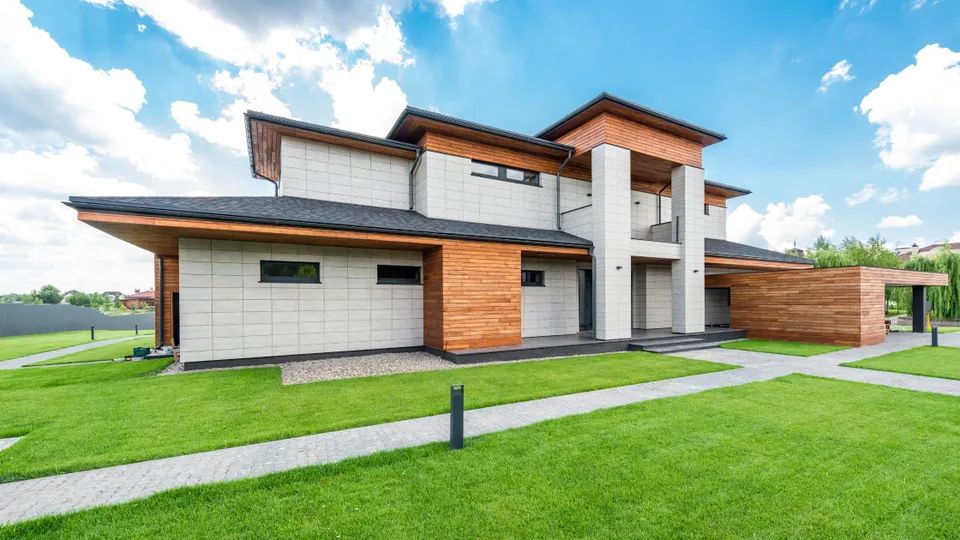
The lifespan of your roof varies significantly depending on the type of roofing materials used, installation quality, and maintenance practices. While a pitched roof typically lasts longer with regular upkeep, an aging flat roof may require replacement sooner due to its design and material limitations.
Different roofing materials have varying durability. Asphalt shingles, for instance, are one of the most popular materials due to their affordability, but they generally last 20 to 30 years with proper care. Metal roofs, on the other hand, can last 40 to 70 years depending on the type of metal used, while clay tiles or slate can exceed 100 years, making them some of the longest-lasting options.
Key components like oriented strand board, ridge cap shingles, and underlayment play a crucial role in your roof's durability. Regular inspections, cleaning gutters, and addressing storm damage promptly can prolong the life of these materials. Additionally, climate conditions greatly affect roofing performance. For example, roofs exposed to severe weather, such as heavy rain, snow, or strong UV rays, tend to wear faster.
By understanding the materials and factors that influence roof longevity, you can better plan for maintenance and eventual replacement, ensuring your roof remains in good condition for as long as possible.
Understand your roof’s lifespan
Lifespan of Common Roofing Materials
Different roofing materials have varying durability. Asphalt shingles, for instance, are one of the most popular materials due to their affordability, but they generally last 20 to 30 years with proper care. Metal roofs, on the other hand, can last 40 to 70 years depending on the type of metal used, while clay tiles or slate can exceed 100 years, making them some of the longest-lasting options.
Factors That Impact Roof Longevity
Key components like oriented strand board, ridge cap shingles, and underlayment play a crucial role in your roof's durability. Regular inspections, cleaning gutters, and addressing storm damage promptly can prolong the life of these materials. Additionally, climate conditions greatly affect roofing performance. For example, roofs exposed to severe weather, such as heavy rain, snow, or strong UV rays, tend to wear faster.By understanding the materials and factors that influence roof longevity, you can better plan for maintenance and eventual replacement, ensuring your roof remains in good condition for as long as possible.
Understand your roof’s lifespan
Exploring Various Roof Types
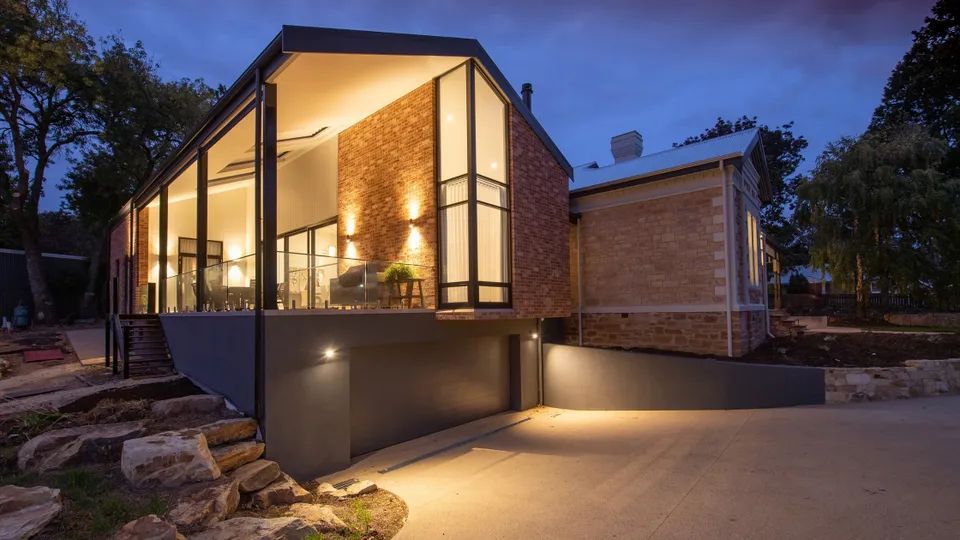
Choosing the right type of roof is crucial as it affects everything from drainage efficiency and energy performance to the overall aesthetic appeal of your home. Different roof styles are designed to meet specific needs and suit various climates. Below, we’ll explore some of the most common roof types in detail.
A hip roof is a popular choice for its durability and ability to handle various weather conditions. With slopes on all four sides, this roof design is excellent for areas prone to strong winds or heavy rain. This roof structure promotes efficient water drainage, reducing the risk of leaks. Hip roofs are also known for their stability, making them a great option for homeowners looking for long-lasting protection.
Gable roofs are one of the most versatile and widely used roof styles. With two roof planes meeting at a central ridge, this design provides a steep slope that allows for efficient snow and water runoff. This makes it ideal for regions with heavy snowfall or frequent rainfall. Gable roofs also offer ample attic or storage space due to their triangular shape, making them both functional and aesthetically pleasing.
Sloping roofs are designed to maximize water drainage and prevent debris buildup. These roofs are especially useful in areas with unpredictable weather conditions, as their angled design allows rain and snow to slide off easily. Sloping roofs also come in a variety of styles and materials, giving homeowners the flexibility to customize their appearance while maintaining practicality.
Flat roofs, while less common in residential settings, are often used for commercial buildings or modern-style homes. Though not ideal for regions with heavy snow, they can be a practical option in areas with limited rainfall. Flat roofs provide additional outdoor space, which can be used for rooftop gardens, solar panels, or lounging areas, adding functionality to the building.
When selecting a roof type, consider factors such as your local climate, maintenance requirements, and the architectural style of your home. By understanding the unique benefits of each design, you can choose a roof that not only enhances your home’s appearance but also meets your functional needs effectively.
Discover which roof type is right for your home
Hip Roof
A hip roof is a popular choice for its durability and ability to handle various weather conditions. With slopes on all four sides, this roof design is excellent for areas prone to strong winds or heavy rain. This roof structure promotes efficient water drainage, reducing the risk of leaks. Hip roofs are also known for their stability, making them a great option for homeowners looking for long-lasting protection.
Gable Roof
Gable roofs are one of the most versatile and widely used roof styles. With two roof planes meeting at a central ridge, this design provides a steep slope that allows for efficient snow and water runoff. This makes it ideal for regions with heavy snowfall or frequent rainfall. Gable roofs also offer ample attic or storage space due to their triangular shape, making them both functional and aesthetically pleasing.
Sloping Roof
Sloping roofs are designed to maximize water drainage and prevent debris buildup. These roofs are especially useful in areas with unpredictable weather conditions, as their angled design allows rain and snow to slide off easily. Sloping roofs also come in a variety of styles and materials, giving homeowners the flexibility to customize their appearance while maintaining practicality.
Flat Roof
Flat roofs, while less common in residential settings, are often used for commercial buildings or modern-style homes. Though not ideal for regions with heavy snow, they can be a practical option in areas with limited rainfall. Flat roofs provide additional outdoor space, which can be used for rooftop gardens, solar panels, or lounging areas, adding functionality to the building.
Choosing the Right Roof Type
When selecting a roof type, consider factors such as your local climate, maintenance requirements, and the architectural style of your home. By understanding the unique benefits of each design, you can choose a roof that not only enhances your home’s appearance but also meets your functional needs effectively.Discover which roof type is right for your home
Metal Roof vs Shingles: Which is the Better Choice for Your Home?
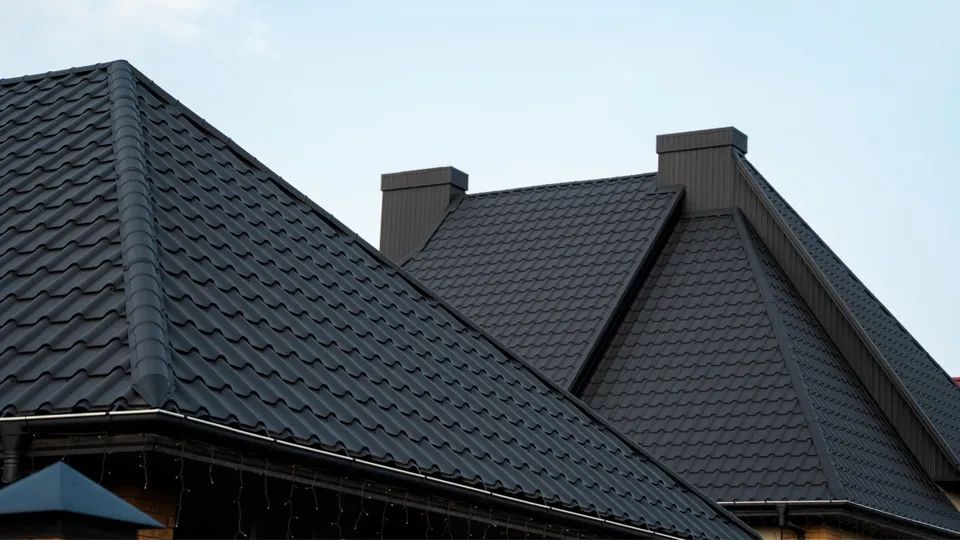
Are you trying to decide between metal and traditional asphalt shingles? Both options have their pros and cons, and the right choice depends on your needs, budget, and climate.
Asphalt shingles are one of the most budget-friendly roofing options available, making them a popular choice for many homeowners. They're easy to install, come in a variety of styles and colors, and work well for most homes. However, shingles typically have a shorter lifespan, requiring replacement every 20-30 years depending on maintenance and weather conditions. They are also more prone to damage from extreme weather, such as high winds or hail.
Metal roofing, made from materials like galvanized steel or aluminum, is known for its unmatched durability and longevity. A metal roof can last 50 years or more with minimal maintenance, making it a long-term investment. It’s highly resistant to harsh weather conditions, including ice dams, heavy snow, and storms, which can extend the overall life of your roof. They are also energy-efficient, reflecting sunlight and reducing cooling costs in warmer months. While the upfront cost is higher compared to shingles, the potential savings on repairs and energy bills make it a worthwhile option for many homeowners.
Choosing between metal roofing and asphalt shingles ultimately comes down to your priorities. If you're looking for affordability and flexibility, shingles are a great choice. If you prefer durability, longevity, and low maintenance, metal may be the better option.
Weigh the options here
Asphalt: Affordable and Versatile
Asphalt shingles are one of the most budget-friendly roofing options available, making them a popular choice for many homeowners. They're easy to install, come in a variety of styles and colors, and work well for most homes. However, shingles typically have a shorter lifespan, requiring replacement every 20-30 years depending on maintenance and weather conditions. They are also more prone to damage from extreme weather, such as high winds or hail.
Metal: Durable and Long-Lasting
Metal roofing, made from materials like galvanized steel or aluminum, is known for its unmatched durability and longevity. A metal roof can last 50 years or more with minimal maintenance, making it a long-term investment. It’s highly resistant to harsh weather conditions, including ice dams, heavy snow, and storms, which can extend the overall life of your roof. They are also energy-efficient, reflecting sunlight and reducing cooling costs in warmer months. While the upfront cost is higher compared to shingles, the potential savings on repairs and energy bills make it a worthwhile option for many homeowners.Choosing between metal roofing and asphalt shingles ultimately comes down to your priorities. If you're looking for affordability and flexibility, shingles are a great choice. If you prefer durability, longevity, and low maintenance, metal may be the better option.
Weigh the options here
Understanding the Different Types of Metal Roofs
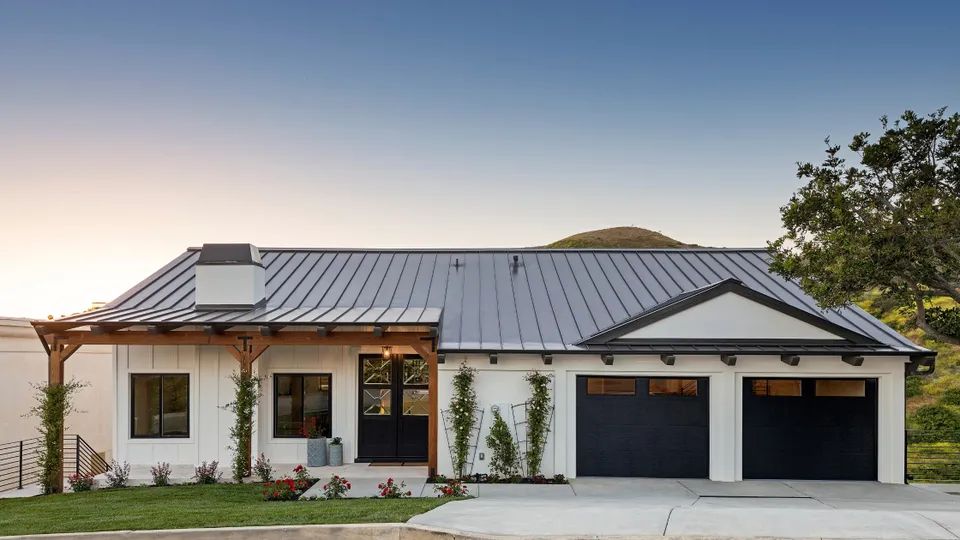
Metal roofs are a versatile and durable roofing option, offering a wide range of styles to suit various needs and aesthetics. They are becoming increasingly popular due to their long lifespan, energy efficiency, and low maintenance requirements. Below, we dive into the key types and their unique benefits.
Standing seam metal roofs are one of the most popular choices for both residential and commercial properties. These roofs feature vertical panels with interlocking seams, which provide superior weather resistance and a sleek, modern look. Their design makes them ideal for handling heavy rain, snow, and hot air, making them perfect for climates with extreme weather fluctuations.
Corrugated metal panels are another common choice, recognized for their wavy, ridged appearance. These panels are highly durable and lightweight, making installation easier and more cost-effective. This style is well-suited for industrial or rustic aesthetics, but it’s also gaining popularity in modern home designs.
Horizontal line designs are a unique and contemporary option. These roofs feature panels installed horizontally across the structure, creating a streamlined and minimalist appearance. They pair well with homes that have clean, geometric architectural styles.
In addition to their various styles, metal roofs offer several key advantages. Their durability ensures they can withstand harsh weather conditions, while their reflective properties help regulate indoor temperatures by deflecting sunlight. This energy efficiency makes them a great choice for reducing cooling costs. They are also compatible with natural light additions, such as skylights or solar panels, allowing homeowners to create brighter, more sustainable living spaces.
Whether you’re looking for a modern standing seam roof, the durability of corrugated panels, or the clean look of horizontal lines, metal roofs offer a solution for every style and need. Their ability to handle hot air, heavy rain, and even snow makes them a reliable and long-lasting investment for any property.
Explore the best metal roofing options here
Standing Seam
Standing seam metal roofs are one of the most popular choices for both residential and commercial properties. These roofs feature vertical panels with interlocking seams, which provide superior weather resistance and a sleek, modern look. Their design makes them ideal for handling heavy rain, snow, and hot air, making them perfect for climates with extreme weather fluctuations.
Corrugated Metal Panels
Corrugated metal panels are another common choice, recognized for their wavy, ridged appearance. These panels are highly durable and lightweight, making installation easier and more cost-effective. This style is well-suited for industrial or rustic aesthetics, but it’s also gaining popularity in modern home designs.
Horizontal Line Designs
Horizontal line designs are a unique and contemporary option. These roofs feature panels installed horizontally across the structure, creating a streamlined and minimalist appearance. They pair well with homes that have clean, geometric architectural styles.
Benefits of Metal
In addition to their various styles, metal roofs offer several key advantages. Their durability ensures they can withstand harsh weather conditions, while their reflective properties help regulate indoor temperatures by deflecting sunlight. This energy efficiency makes them a great choice for reducing cooling costs. They are also compatible with natural light additions, such as skylights or solar panels, allowing homeowners to create brighter, more sustainable living spaces.
Why Choose Metal?
Whether you’re looking for a modern standing seam roof, the durability of corrugated panels, or the clean look of horizontal lines, metal roofs offer a solution for every style and need. Their ability to handle hot air, heavy rain, and even snow makes them a reliable and long-lasting investment for any property.Explore the best metal roofing options here
Partner with a Roofing Expert
Understanding every roof part, from the roof frame to the ceiling joists, empowers homeowners to maintain a functional roof and extend its lifespan. But sometimes, the complexity of a residential roof or entire roofing system calls for expert help.
Visit our roofing service page to get expert advice, schedule a free inspection, or consult on your next project. At Wisconsin Exteriors, we help maintain your roof and your peace of mind.
Visit our roofing service page to get expert advice, schedule a free inspection, or consult on your next project. At Wisconsin Exteriors, we help maintain your roof and your peace of mind.
